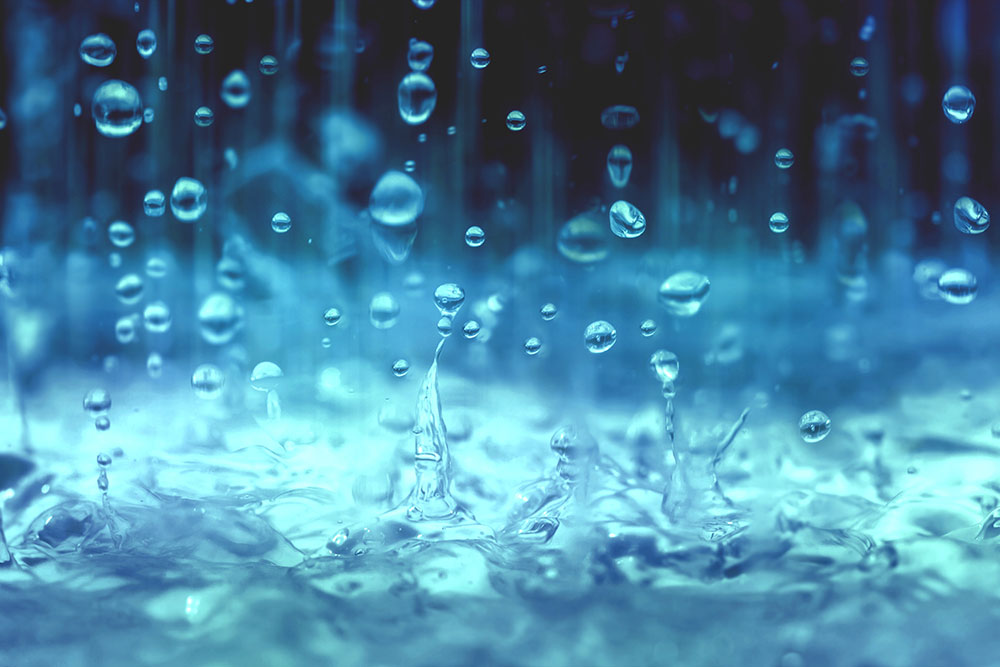Harvest That Precious Rainwater
With April upon us, we are reminded that every year Mother Nature provides us with trillions of gallons of water. Free of charge. In the form of rainwater.
Last year, for instance, the storms which pummeled the Carolinas dropped enough water to halt California’s five-year drought. And yet, few of us take advantage of learning how to capture this precious resource.
Instead, it flows off lawns into streams, then rivers, then oceans.
A recent article in Irrigation & Green Industry magazine suggests that, when irrigation specialists build cisterns to harvest rainwater, they are providing their customers with “manna from heaven.” But they’re also helping to build the water infrastructure of the future. And providing themselves with an additional revenue source.
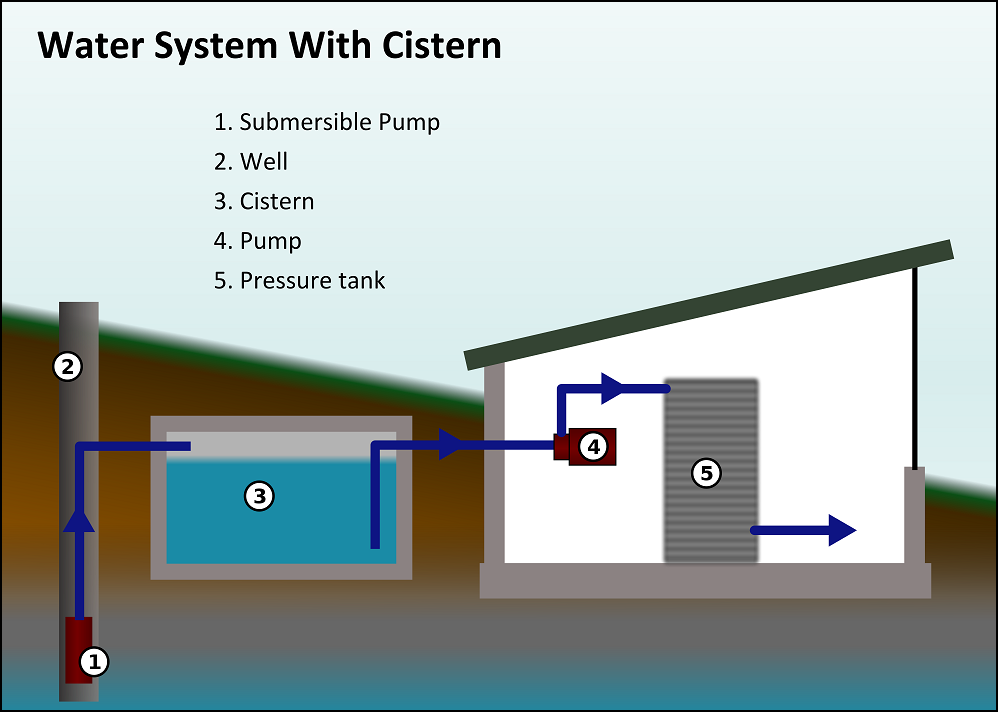
New Revenue Stream
Paul Lawrence, president of Texas Land & Water Designs LLC, has been installing rainwater harvesting systems for the past seven years, and he’s a huge proponent of the practice. Lawrence feels that, not only is it a good source of revenue, but startup costs are low for the contractor.
“Licensed irrigators already have many of the skills that are required for rainwater harvesting; it’s a real natural fit for them,” he says.
And it’s not as complicated as it might seem. Virtually every house and commercial building already possesses roofing, gutters and downspouts. The catchment system simply takes the rainwater that now flows down the street and stores it for use at a later date.
The Basic Setup
There are several different options for storing rainwater: above-ground storage tanks, below-ground cisterns, or downspouts directed to bioswales. Smaller systems (such as those that capture less than a hundred gallons) can use rain barrels for storage.
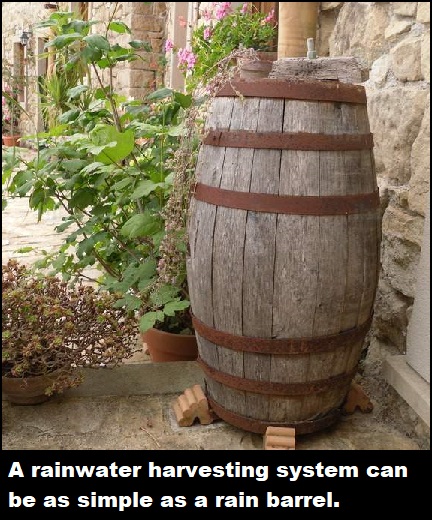 Whatever option is chosen, a pump may be required to release the water when it’s ready to be used. Most pumps on residential systems are between one-third and one horsepower. That amount of power is sufficient to pressurize the water for either spray or drip irrigation. The pump can be activated manually, or a controller can be used to automate the rainwater flow into the irrigation system.
Whatever option is chosen, a pump may be required to release the water when it’s ready to be used. Most pumps on residential systems are between one-third and one horsepower. That amount of power is sufficient to pressurize the water for either spray or drip irrigation. The pump can be activated manually, or a controller can be used to automate the rainwater flow into the irrigation system.
A couple of important considerations:
- Sanitation should be the first consideration. At the very least, a screen should be placed in the gutter over the downspout. This will keep out large particulate matter, large solids and leaves.
- Storage tanks must be properly sealed against pests and bacteria; otherwise, the water inside can become toxic.
- Every storage tank needs to have an overflow device to prevent backup in heavy-rain situations.
- The overflow device should be fitted with a flapper valve that will close up immediately after excess water has stopped flowing out. This will keep vermin from crawling up the spout.
An Attractive Option
For property owners who find traditional storage units unattractive, more aesthetically-pleasing options are available. For instance, Aquascape, an Illinois-based company, offers its “RainXchange” system, which combines a recirculating, decorative water feature with an underground storage basin.
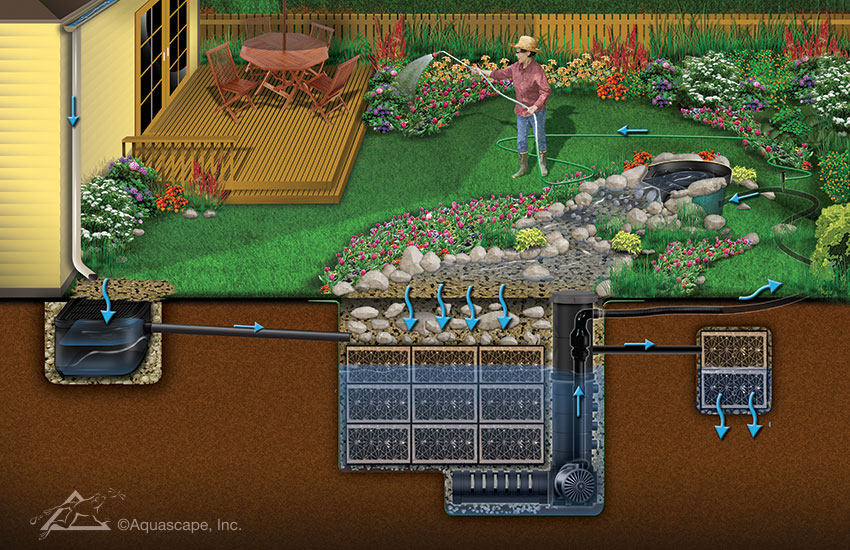
According to Irrigation & Green Industry magazine, RainXchange offers the same functionality of other storage systems. Specifically, “It makes use of modular storage basins, stackable blocks that are somewhere between milk crates and Legos, which can be arranged in different shapes to fit a variety of application settings. They sit inside a rubber membrane to form a single, water-tight unit underground.”
Contractors can install the RainXchange system under turf grass. An increasingly common option is to install the system beneath a patio made of permeable pavers. According to Ed Beaulieu, director of field research for Aquascape, “This way, the pavers act as a catchment area that prefilters the rainwater before it enters the blocks. It’s very, very efficient.”
The following video demonstrates the installation of a similar underground system by a Texas-based vendor, Innovative Water Solutions:
Closer to home, Rain Brothers, a rainwater-harvesting company based in Columbus, offers system design services throughout Ohio and much of the Midwest.
A simple residential project typically runs between $1,500 and $5,000, depending on a variety of factors, such as size and excavation costs. For instance, if a client’s property doesn’t allow room for heavy equipment, digging by hand will increase the labor time substantially.
Who Are the Target Customers?
According to most irrigation contractors, conservation is the primary motivator when property owners consider installing a rainwater catchment system. Despite the fact that the installation costs them money, these clients are more worried about the long-term consequences of water shortages, pollution and soil erosion.

They may have heard that capturing rainwater is a tried-and-true method of simultaneously controlling runoff and withstanding drought conditions.
“In a residential setting, it’s next to impossible to show an ROI in three to five years,” Lawrence says. “By and large, those clients are doing it for environmental concerns.”
Add It to Your Menu of Services
Rainwater harvesting is a viable permanent addition to the menu of services offered by landscape professionals. As homeowners rediscover this ancient practice of capturing rainwater, contractors will have increasing opportunities to offer their services for installation projects.
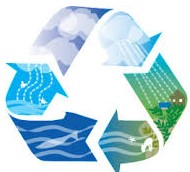 Contractors can easily acquire the skills necessary to get started with catchment system installations. And there is an abundance of resources to ensure your success. The national Irrigation Association offers online classes on the subject, such as “Water Quality of Alternative Water Sources” and “Earning Points for Green Projects.”
Contractors can easily acquire the skills necessary to get started with catchment system installations. And there is an abundance of resources to ensure your success. The national Irrigation Association offers online classes on the subject, such as “Water Quality of Alternative Water Sources” and “Earning Points for Green Projects.”
In addition, the American Rainwater Catchment Systems Association (ARCSA) hosts workshops across the country for those seeking to pass their accredited professional exam. The ARCSA also offers a Resource Guide of rain harvesting designers, educators and suppliers.
Once you’re up to speed on best practices, rainwater harvesting can become a highly profitable source of revenue for your company… and a valuable service for your customers.
Sources:
Irrigation Association
Innovative Water Solutions
American Rainwater Catchment Systems Association

